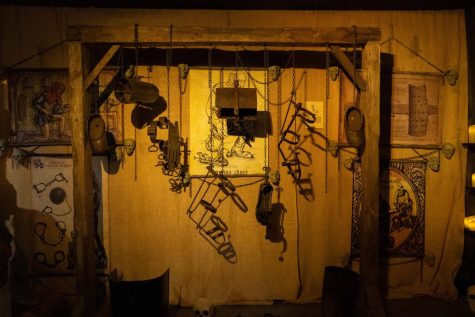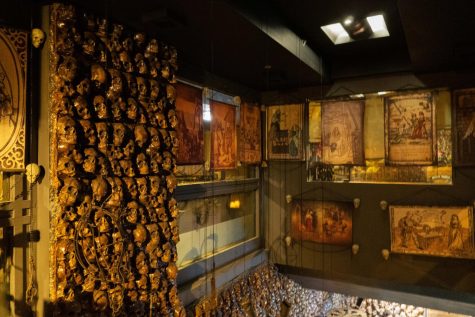Medieval Torture Museum mixes fun and fear
October 5, 2022

The year is 760 and Vikings are ruling the seas, but not everything is going smoothly, as they find a traitor among them.
They do not tolerate disloyalty and sentence the traitor for the ritualistic execution: a bloody eagle. The executioner stabs the traitor deeply with a blade that breaks him open rib-by-rib, leaving his lungs exposed.
The exposed lungs then get pulled out to opposite sides by ropes to create “wings.”
This is just one out of 100 displays at the Medieval Torture Museum, located at 177 N. State St., which opened in Chicago last winter. Some of the displays are interactive, where visitors can feel like the executioner, such as by dunking an upside-down witch in a barrel or sitting in the electric chair.
“I was fascinated by [medieval torture] … I have degrees in philosophy, folklore and anthropology,” said Paula Malone, manager of the museum. “It’s the human condition, sort of social realm thing. I thought it was a great museum and everybody should know about the history of torture.”
Chicago is the second location of the Medieval Torture Museum; the original is located in St. Augustine, Florida, and has been operating for five years.
The medieval era lasted approximately 1,000 years, beginning at the fall of Rome, in 476 C.E., and ending at the European Renaissance, in the 14th century.
Before starting the tour, at the front counter, there are QR codes that suggest visitors download a ghost-hunting app and website with all of the displays’ stories narrated.

Malone said 20% to 40% of the items are real and have been purchased at private auctions, but not always with an authentication certificate. The other displays are copies made in Europe and U.S.
Across the eight rooms of the museum, visitors hear ominous music and the loud dropping of the guillotine. Each room is dimly lit and creates an illusion that the sculptures with horrified facial expressions are alive.
Malone said the sculptures were made with real models for reference, to capture real fear in their faces.
But some people find this atmosphere romantic, like Elizabeth Anderson and Ben Mood, who came to the museum during their trip to Chicago for their wedding anniversary.
Anderson said she was fascinated by medieval torture devices ever since learning about it in history class. She is also a true crime fan, but her husband is not.
“I love [the museum], it’s so much fun,” Anderson said. “I like that it’s interactive, I love that they had the audio description, so you get more details, and stories, and backgrounds. I love all the pictures and the display, I just think everything looks super cool.”
Malone said the creator of the museum, Eugene Grach, did several years of historic research to make the exhibition historically accurate while keeping it entertaining with the interactive aspect.
“If people want to see where their favorite horror movies started, where their nightmares came from, they should come here,” Malone said.
The Medieval Torture Museum is open every day from 10 a.m. to 8 p.m. on weekdays and until 9 p.m. on Fridays and weekends. The tickets are currently on sale for $29.99 on the museum’s website.







